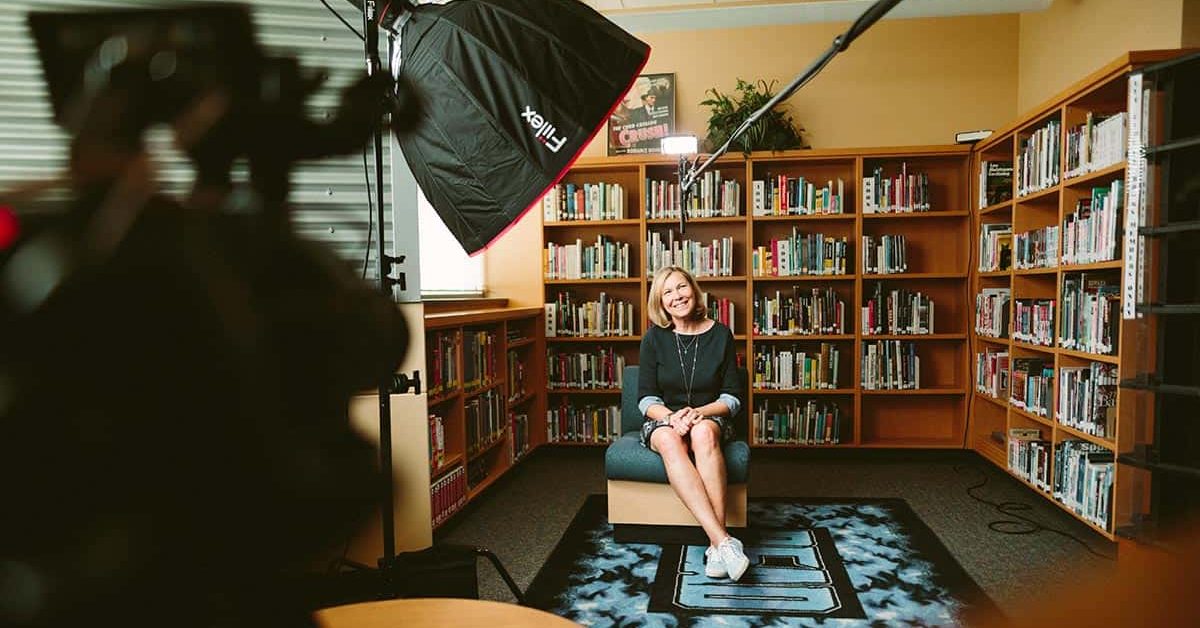Don’t you hate being on a video call with “that person?“ You know, the person with the distracting background, that’s too close to the camera and with audio that sounds horrible? You tend to pay more attention to those elements rather than the message they’re trying to get across to you.
If you have not experienced that, chances are you might be “that person.” So in an effort to stop you from becoming “that person,” let’s dive into four tips for an aesthetically pleasing video call.
1. Test Out Your Equipment
You know the saying “practice makes perfect?” It applies to your equipment as well. The more you use your equipment, the more comfortable you will be when it’s time to operate it.
A quick tip: to do a couple of dry runs prior to any meeting or video chat.
Wipe off your camera, check to see if your microphone is set up properly and run a couple of tests to see how you look and sound. Keep in mind, you do not need to have the most expensive webcam or microphone to have an aesthetically-pleasing video.
Many people are using the microphones and cameras that are internally built into their computers. You can easily set yourself apart by using headphones that come with a mic or Bluetooth headphones if you want to get better sound quality.
What’s most important, though, is for you to know how to operate your equipment before the meeting starts.
2. Optimize Your Background
Your background is important; it can either help or hinder your message.
Think about it this way: When you’re on a video call with an individual you’re not only looking at their face, you’re also paying attention to what’s behind them.
Keep your background as simple as possible. With a clutter-free backdrop, your audience’s eyes will focus on you and your message only. Try sitting in front of a blank wall — no one wants to see the guts of your closet or that
3. Look Presentable
If you were having this meeting in person would you be wearing pajamas? If the answer is no, then you shouldn’t wear them during a video call. Even if just your torso is going to be visible, you should dress presentably from head to toe.
You never know when you might have to stand up. Emergencies and accidents happen!
Try mimicking television best practices. For example, wear flattering solid colors closer to your face so that way the eye will be drawn towards your face.
Along with wearing flattering colors, you should check your teeth before speaking. If you’re not trying to show your audience what you had lunch prior to the meeting, checking your teeth is vital.
4. Know Your Angles
Now that your background is simple and clutter-free, your teeth are clean and you’re well-dressed, it’s time for you to focus on your angles. Just like photography angles are important for mood and tonality.
If your camera is angled too low, your audience can get a glimpse of what’s up your nose. If your camera is angled too high, your audience may see over you and you could appear smaller, less strong and not important.
The best trick is to make sure your camera is at your eye level. You can achieve this look by stacking books or magazines under your laptop or moving your external camera around to make sure that it’s at eye level.
5. Adjust Your Lighting
Even if your background is simple, you look great and your angles are just right, if your lights aren’t on point, your co-workers or clients may not see you anyways. And all that preparation was a waste.
The best recommendation is to stay away from overhead lighting. Overhead lighting casts shadows under your eyes and it makes you look more menacing and tired rather than friendly and approachable.
To get a better understanding of this, think about your favorite movie. Whenever the villain is shown, the lighting will cast dark shadows under the creases on their face. But when they show the hero, on the other hand, the lights will be soft and the face will look smooth and happy. So to achieve the hero look, simply sit towards soft natural lighting. This will illuminate you properly while giving you a friendly and professional look.
6. Minimize the Distractions
If you’re working from home, we’re willing to bet that you have a couple of guests there with you. Maybe your children are playing, your spouse is in their own meeting, or the family pets are having a heated discussion with the postman — we call those distractions.
While you can’t minimize your family, you can minimize distractions during video calls. Simply separating yourself, create a family schedule around your meetings and put a “Quiet Zone” sign in front of your office door. No matter what tactic you use, minimizing distractions is vital to video calling.
Let’s keep in mind that distractions are more than what’s going on behind the screen. The majority of the time it’s the extra screens in front of you that are the most distracting.
A quick tip: Close out any windows and extra tabs that are not needed during the video call. By simplifying what you can focus on, you’re becoming less distracted from the meeting and being able to put your all to those in attendance. People can tell when your eyes are wandering.
Now you are properly equipped with six proven tips for an aesthetically-pleasing video call! If you apply them, we promise you will never become “that person.” But don’t stop here, we have even more information for you.
Check out our blog about 10 Simple Best Practices For Virtual Meetings.
Happy video calling!





